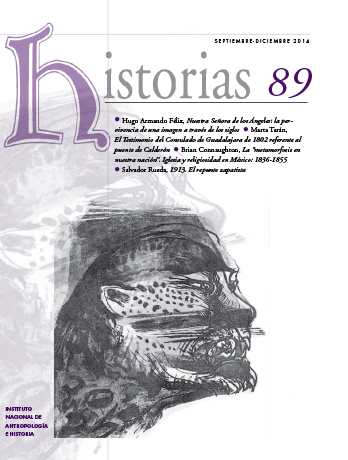1913. El repunte zapatista
Abstract
Taking advantage of the distraction of federal troops during the events of the Ten Tragic Days, the poorly armed Zapatistas sought to make their presence felt, more as a matter of display than to represent any real threat to the power of the haciendas. The gesture of terror replaced acts of terror when the southern rebels set siege on the city of Cuernavaca in early April 1913. And although they always expressed their opposition to Madero’s government, after he was overthrown, they never abandoned the principles of their struggle set forth in the Plan of Ayala, which led them to distance themselves first from the “usurper” Victoriano Huerta and later from Pascual Orozco, whom they described as an “unworthy representative of the people’s revolution,” for having formed an alliance with Huerta and for having called to the Zapatistas to lay down their arms.
Downloads
References
Francisco Pineda, La irrupción zapatista, 1911, México, Era, 1997.
John Womack, Zapata y la Revolución mexicana, México, Siglo XXI/Era/Sep, 1985, p. 138.
Salvador Rueda, “Memoria zapatista y el sentido de la historia”, en Zapata en Morelos, México, Lunwerg-Gobierno del Estado de Morelos, 2010.
Francisco L. Urquizo, Obras escogidas. La Ciudadela quedó atrás, México FCE/INEHRM-Gobierno del Estado de Coahuila/Asoc. Cívica Gral. de Div. Francisco L. Urquizo, 2003.
Gildardo Magaña, Emiliano Zapata y el agrarismo en México, México, Secretaría de Hacienda y Crédito Público/Biblioteca Miguel Lerdo de Tejada, 1965, t. 3, pp. 105-111.
Gildardo Magaña, op. cit, pp. 273 y ss.; muerte de Orozco, pp. 279 y 287; John Womack, op. cit., p. 171.



